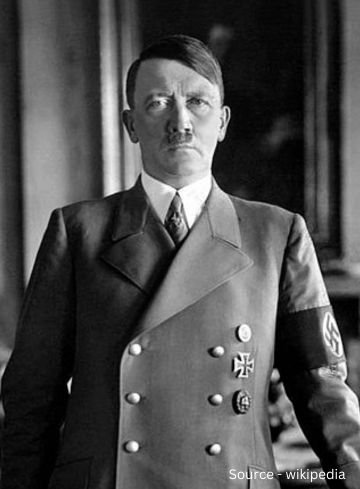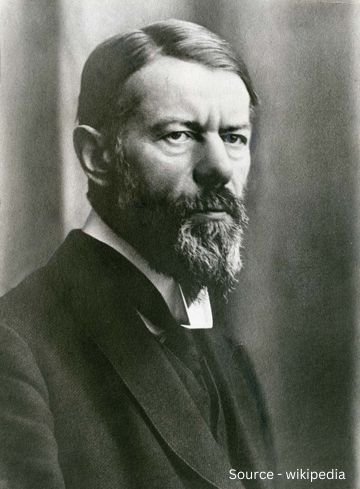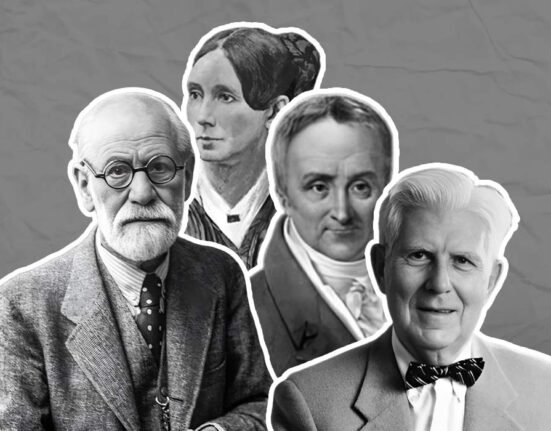The concept of leadership and leadership styles has informed a vast array of fields of research for several years. Leadership is a complex concept that has taken its shape in varied forms throughout history. Historical figures such as Mahatma Gandhi, Nelson Mandela, and Winston Churchill as well as contemporary leaders such as Elon Musk have had influential roles in leading their respective societies as well as the world.

Julius Caesar’s strategic approach and political abilities transformed the political environment in Rome. Hitler’s persuasion, manipulation and authoritarian tactics led to severe global consequences. Gandhi’s high moral standards and non-violent approach led to India’s independence. Musk’s transformational leadership and vision have caused revolutionary changes in various industries of the world.
Leaders are people who don’t necessarily do the greatest things, rather they are the ones who get other people to do the greatest things. Therefore, leadership is influencing people to work towards the achievement of the group’s goals. Leadership includes aspects such as decision-making, problem-solving, empathy, intelligence, and optimism.
Are leaders born or made?
There has been much debate in Psychology about whether psychological characteristics are inherited or are a result of the environment. Intelligence and personality are among the most debated psychological characteristics. These two components are necessary to be categorized as a leader.
Research claims that 55-60% of an individual’s intelligence is genetically inherited. This means that while it is possible to be born with an intellectual potential, it is the environment that one grows up in that will determine whether that potential is realized.
In terms of personality, temperament and character are the ones which personify an individual. Bouchard (1984) stated that personality characteristics are 50-55% genetically inherited. Thus, when we speculate whether one is born a leader or not, we can conclude that every individual at birth may possess the potential to be a leader.
Read More: Human Psychology Theories on Personality Development
It becomes necessary to grow up in an environment that fosters the potential of an individual to become a leader. This potential may be realized under ideal environmental conditions as well as experiences. Thus, a leader is made by a combination of two necessary factors; a person’s characteristics and by providing the necessary knowledge and skills to become a leader.

Is it possible to develop leadership qualities? Psychology says that the development of a leader takes place on two levels. Firstly, it becomes necessary to identify the characteristics that determine being a leader. To do that, psychological assessments and investigations are necessary to undertake to understand the characteristics of a natural leader.
Secondly, we need to define how to enhance and refine those characteristics. This improvement would lead an individual to implement the leadership characteristics that would foster the growth of leadership qualities in people.
10 signs of an Effective Leader
In the 1990s, the research on leadership traits aimed to understand an individual’s behaviours, thoughts and feelings along with the situational factors. Emphasis was put on social intelligence as an important factor. Traits of social awareness, self-awareness, self-evaluation and social abilities were researched. Research concluded 10 major leadership traits that individuals should possess or attempt to develop.
1. Intelligence:
Intellectual capacity refers to the aptitude for understanding, reasoning, and grasping facts and their relational patterns. Research has consistently highlighted that leaders possess a sharper intellect than non-leaders. However, research also indicates that a large disparity in the intellectual abilities of leaders and non-leaders hinders leadership effectiveness. A leader should be able to communicate complex concepts in such a manner that it is understandable to their team members.
2. Self-confidence:
For effective leadership, it is essential to trust oneself with one’s ideas and decision-making skills to ensure success. Self-confidence highlights the ability to ensure that goals and ideas are achievable and realistic. Self-confident leaders possess a positive attitude and the necessary skills to overcome challenges. They have a stable sense of self-esteem and trust in their power and ability to make effective decisions for their members and organization/community. They can stay calm under pressure and are open to constructive feedback.

3. Determination:
An effective leader is motivated and persistent in the decision-making process. They tend to persevere when faced with obstacles and are persistent enough to perform their job till completion. These leaders are usually energetic, tenacious, persistent, and take initiative. Determination in a leader creates a resilient and goal-oriented environment that inspires their team leaders to achieve success.
4. Personal Integrity:
Integrity was considered to be the most desired trait in a leader as per the survey conducted with 1500 managers. For the team members to follow the instructions and directions of a leader, it becomes essential that the leader be truthful, ethical and principled. To be successful as a leader, it is important to establish interpersonal trust and respect with the members of the team. The leader must be ethical in their daily routine of leading a group to receive the admiration and loyalty of its members.
The leaders need to follow the same rules that they have established for the followers. Exploitation and manipulation of the group’s procedures and its members can compromise the credibility of the leader. Leaders must take responsibility for their actions and decisions, failure to do so can result in diminishing the faith of the followers.
5. Empathy:
To maintain cohesiveness and work collaboratively with subordinates, leaders need to possess knowledge of human behaviour as well as the processes of the group. Empathetic leaders are necessary to understand the motivations, feelings and values of their members and subordinates. This ability helps the leader decide which strategy or leadership style would be effective to achieve success.

Leaders who introspect are better able to understand their behaviours and their impact on their followers. Leaders who also possess effective communication ability and persuasion skills are relatively more successful in their role. Additionally, strong interpersonal skills in a leader ensure group cooperation and support to achieve community goals. They inspire others to align with the organization’s or community’s vision and goals. Through self and other awareness of goals, ideas and feelings, they can motivate their team members to contribute their best efforts.
6. Creativity and Analytical ability:
A leader must have a sufficient understanding of the operations of the organization and the direction in which it is headed. Leaders must have the ability to predict the future of the organization based on current trends. This must be done to ensure analytical and strategic planning is done to sustain the organization in economically difficult times. Intuition along with conscious reasoning ensures that organizational or community-level problems are dealt with in the context of the situation at hand.
7. Diagnosticians:
The most unique ability that a leader can possess is to be able to understand the situation at hand accurately and adapt creative solutions to meet its demands. A leader who can assess accurately the social and emotional demands of the situation is high on self-monitoring and socio-emotional intelligence. Those who are high on these traits can understand the needs of the group and come up with solutions that satisfy the employee’s needs and the organization’s goals. These leaders use their emotional intelligence to improve and enhance their cognitive processes and decision-making abilities.
8. Flexibility:
When working in an organization or at the community or national level, a variety of complex situations are encountered by a leader. In stressful situations, people often react in a uniform and narrow manner. Their most dominant responses are highlighted. However, for a leader to sustain and be effective, it becomes necessary to have broad and flexible patterns of behaviour across all situations. Leaders possessing traits of adaptability, behavioural flexibility and openness are viewed as more effective by their followers.

9. Consistency:
All communication that is done across the community or organization by the leader must not prove to be ambiguous. The exchange of information by the leader where ideas, intentions and vision are presented should be done with enough clarity and precision.
Not just verbal communication, but also non-verbal communication and patterns of behaviour of the leader should be consistent. The followers should not have to infer the meaning of the actions, internal thoughts and behaviours of the leader. When the behaviour of the leader proves to be hypocritical, the followers may lose motivation and performance may decline.
10. Charisma:
Charisma in a leader inspires their followers to view them as a role model. These leaders demonstrate confidence in their preparedness to pursue exceptional goals which encourage the followers and instill confidence in them. Charismatic leaders are influential in their regular communication which encourages the followers to achieve the mission and goals of the company. These leaders tend to go beyond their internal conflicts and direct their energy into constructive work.
Leadership theories
Research on leadership qualities indicates the refinement and modification of various leadership theories proposed by scholars and researchers. It has been observed that the type of leadership applied depends on a contextual basis. The situations, culture, working environment, and new laws and regulations all impact the concept of leadership. It was believed initially that great leaders are born and leadership traits are solely inherent, however growing research in this area has led to the inculcation of situational factors as well.

Great-Man Theory
The Great Man Theory proposes that great leaders are born, thus only those who are gifted with the potential to become a leader can become one. Thomas Carlyle stated that all great achievements are the result of the efforts put in by heroes such as Julius Caesar and Napoleon. Thomas Carlyle claimed that there are two types of people, one of which is those who have an impact on the course of a situation. Without them being involved, the situation at hand could be much more different. These influential people usually possess traits of intelligence, character and strong willpower.
The other type of people are those who remain mere passive observers or followers. In a demanding situation, they would not determine the course of their action. They remain as followers and are likely to be influenced by leaders. However, this theory is widely criticized and disputed. Criticisms are mainly based on the reliability of data on whether leadership is inherent or not. Researchers and scholars have since then tried to identify the traits associated with leadership and understand how these traits can be developed.
The Trait Approach
The trait theorists proposed that leaders are different from those who remain followers. The goal of the research was to identify the personality characteristics and physical traits that make an individual a leader. Two traits were identified by Jenkins, emergent and effective traits. Emergent traits are dependent mostly upon genetic inheritance such as intelligence, self-confidence and attractiveness. Effectiveness traits based on learning and experience included charisma as the fundamental aspect of leadership.

Charisma was defined by Max Weber as a revolutionary force that a leader possesses which creates a radical shift in the fundamentals of the status quo. This is achieved through followers who are completely devoted to the leaders and perceive them as supernatural entities endowed with powers. Research conducted on distinguishing leadership traits from that of non-leaders informed that only minor variances exist between leaders and followers.
Thus, trait theory proved to be a failure in identifying the traits that every single successful leader had in common. The traits of military and non-military leaders were studied in the 1940s which formed an understanding of how traits tend to develop about the situation.
Behavior Theory
A behavioural approach to leadership suggests that to deem a leader effective, it is essential to evaluate their observable behaviour and conduct rather than their inherited traits. It claims that anyone who can observe, learn and apply specific traits and characteristics can become a successful leader. Hence, their responses and repertoire in a particular situation should be observed and evaluated. Kurt Lewin and researchers did a classic study to identify behavioural patterns of leadership since not any one style is effective in all situations. Three behavioral patterns; democratic, autocratic and laissez-faire were identified.

The autocratic style stresses the rigid control of the leader over the group’s activities and decisions. The democratic style emphasizes the participation of the group as a whole in decision-making. A laissez-faire style was deemed appropriate while leading a team of highly skilled cohorts where the intervention of the leader is not required.
Which style contributes as the most effective while leading a group has been a major topic of inquiry. A leader may either hold all the power and authority in decision-making or share and coordinate with the group members. The research highlighted that the distribution of power in the democratic style is more beneficial than the other two styles.
In the 1950s, rating scales, interviews and observations were used to identify the specific behaviours of the leaders, thus moving away from the trait approach. Scholars identified two factors of successful leader behavior; one associated with interpersonal trust and warmth, two-way communication and member participation called employee-oriented. The other was associated with task completion, goal achievement and the directive nature of the leader called task-oriented.
Although this was an important step in leadership research, attempts to predict the effectiveness of these styles in organizational structure have been unsuccessful. Thus, researchers claim that trait and behavioural approaches failed since no one style is deemed effective in all situations. Rather it is the nature of the task and situational factors that determine which style will be the most effective.
Contingency theory
Contingency theory states that there is no one right direction to be a leader since there are external or environmental factors to consider. The style of leadership which is implemented in a particular situation may or may not be effective. Thus, it is not just the attributes of the leader but the situational and environmental factors as well which determine successful leadership.
The factors of the environment were not paid attention to by early theorists. These factors include the status of the economy, the culture of the organization, new laws and policies, and the availability of potentially trained employees. Thus, effective leadership is a combination of the traits of a leader as well as the degree to which a particular situation gives the leader a sense of power, control and influence.
This theory posits that the level of situational control determines the success rate of a leader. Situational factors are the relationship between the leader and follower, the structure of the task and the degree of authority. For effective leadership, it becomes essential to establish cohesiveness between the leader and their team for group support. Failure to establish that results in being directive and authoritarian rather than planning and productivity.
Successful leadership is the result of effective guidance provided by the leader to their team members. The more certain a task, goal or procedure is, the greater the sense of the leader’s situational control. The other factor which boosts situational control requires for the leader to be in a position of power. The amount of authority distributed by the organization to its leader determines that.
In conclusion, this theory states that leadership is not the result of nature or nurture, it is the adaptation to the situation which determines the transformational style possessed by a leader.
Conclusion
Effective leaders encompass qualities that make them good with people at establishing relationships and creating a following and they can assert themselves in situations when the need arises. The natural traits that these leaders possess are that they are articulate, charismatic, confident, bold and theatrical. Although, leadership isn’t about natural talent alone. Through experience and training, skills such as emotional intelligence, decision-making, and interpersonal skills can be developed.
In conclusion, each and everyone can develop leadership qualities and skills. The result of their efforts will depend in part on the natural abilities that they possess and how effective their training is. Leadership qualities rely on genetic predisposition and learned skills alike, similar to intelligence. Just as someone with average intelligence in an enriching environment will not become a genius, someone without a natural inclination towards leadership will not become a top leader.
References +
- Amoretti, G. F. (2022). Leader and leadership from a psychological perspective. Geopolitical, Social Security and Freedom Journal, 5(1), 99. https://doi.org/10.2478/gssfj-2022-0007
- Judge, T. A., Bono, J. E., Ilies, R., & Gerhardt, M. W. (2002). Personality and leadership: A qualitative and quantitative review. Journal of Applied Psychology, 87(4), 765–780. https://doi.org/10.1037//0021-9010.87.4.765
- Wesley, A., & Narayan, S. (2023). Leadership: An in-depth study of the attributes of an effective leader. The International Journal of Indian Psychology, 11(3). https://doi.org/10.25215/1103.302
- Lord, R. G., Day, D. V., Zaccaro, S. J., Avolio, B. J., & Eagly, A. H. (2017). Leadership in applied psychology: Three waves of theory and research. Journal of Applied Psychology, 102(3), 434–451. https://doi.org/10.1037/apl0000089
- Khan, Z. A., Nawaz, A., & Khan, I. (2016). Leadership theories and styles: A literature review. Journal of Resources Development and Management, 16. Retrieved from http://www.iiste.org/Journals/index.php/JRDM/article/view/28386













Leave feedback about this